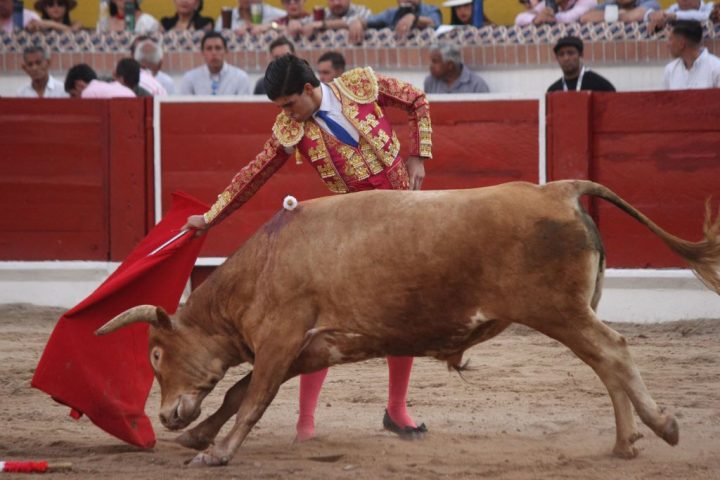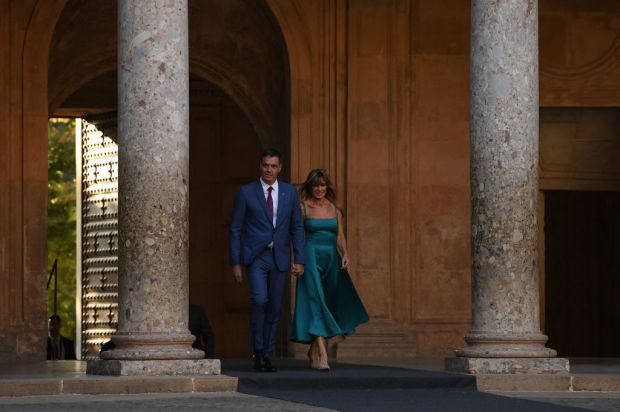Bullfighting is once again in the spotlight in Spain. This time, it’s the focus of a clash between the country’s Socialist-led government and the Fundación del Toro de Lidia (FTL), a non-profit organisation that defends and promotes the practice.
The row kicked off last year because bullfighting – known as the ‘corrida de toros’, or ‘running of bulls’ – was not included in a youth culture voucher (bono cultural joven) introduced by Spanish PM Pedro Sanchez. Angered by this decision, the FTL went to the Supreme Court: last Tuesday the judges ruled in its favour, citing 2013 legislation which made the bullfight part of Spanish ‘cultural heritage’.
In itself, the bullfight is no more political than a piece of music or a painting
Isabel Ayuso, the fiery Conservative president of Madrid, welcomed the court’s decision and accused the government of ‘ideological bias’ in omitting the corrida from the voucher scheme. But Sergio Torres, director general of animal rights at the Ministry of Social Rights, took the classic left wing position and tweeted that the 2013 legislation should be repealed ‘so that bullfighting is never again classed as cultural heritage’.
The corrida consists of three carefully-choreographed thirds, or ‘tercios’, lasting twenty minutes in total. It is the torero’s job to showcase the animal’s strength and vitality through his artistry with the cape, then to kill cleanly and quickly. From an outsider’s perspective – as an expat who has been living in the southern region of Andalucia, the cradle of bullfighting, for eight years – it seems obvious that the corrida transcends political ideology: the criteria on which it is best judged are artistic and moral. In itself, the bullfight is no more political than a piece of music or a painting. But like any other piece of art, it can of course be put to political uses – and that’s exactly what’s happening in Spain.
The right – mainly comprised of the conservative Popular Party (PP) and Vox – claims that this spectacle is an essential part of Spanish culture protected by law. There is a strong political heritage to this attitude, according to which the corrida is also a symbol of Spanish unity: the PP was founded in 1989 by a minister who served under fascist dictator Francisco Franco, who himself adored bullfighting and labelled it Spain’s ‘national sport’.
But the left – made up of the Socialists and their more radical coalition partner, Podemos – sees only cruelty in the bullfight, arguing that it’s a barbaric relic that has no place in the progressive, EU-centric country of today. Catalan separatists from both left and right, meanwhile, base their opposition on a distinct cultural identity, from which the bullfight is excluded as a symbol of the ‘other’ Spain. In 2010, Catalonia became the second Spanish region to ban bullfighting, two decades after the Canary Islands.
Because of these deeply-rooted associations, it would be political suicide for a high-profile member of the Socialists or Podemos to declare their love of the corrida, or for a prominent Vox or PP minister to criticise it as an anachronism. But this obscures the fact that the bullfight ‘has never had a [political] colour’, as one expert said in 2019, and that ‘historically it has been part of life for all social classes’. Look around the stands at a bullfight today and you see that that’s still the case.
The importance of separating bullfighting from politics is underscored by the very legislation the Supreme Court referred to in last week’s ruling. The law passed in 2013 defined the corrida as an ‘artistic manifestation in itself unrelated to ideologies that highlights deeply human values such as intelligence, courage, aesthetics [and] reasoning as a way of controlling brute force’. This legislation was also cited by Spain’s Constitutional Court in 2016, when it overturned the Catalan ban on bullfighting introduced six years before.
Admittedly, the law defining bullfighting as an ‘artistic manifestation’ was not free from political motivation: it was passed by the Conservative government of Mariano Rajoy, Sanchez’s predecessor and former arch-rival. Nevertheless, in attempting to disentangle the corrida from Spain’s polarised politics, the cultural heritage legislation of ten years ago sets the right criteria for assessing the spectacle in its own right.
One of the most powerful arguments against the corrida is that it is morally problematic to kill an animal as part of a spectacle which provides some kind of ‘enjoyment’ – even though that word fails to capture the disturbing blend of emotions caused by a bullfight. But this objection must be tackled in parallel with a hard look at the morality of raising animals for human consumption. Is it any ‘better’, morally, to kill a distressed animal for steak or burgers behind the closed doors of an abattoir, than to kill one as part of a tightly-regulated dramatic spectacle in which the bull is a respected, even revered, protagonist?
Many who support the corrida’s existence argue that the artistry and drama of a bullfight justifies the animal’s suffering and death, especially in light of its long and comfortable life. Fighting bulls live wild for at least four years in huge pastures known as dehesas, never encountering human beings on foot. In other words, they enjoy longer and better lives than cattle raised solely for meat, which typically live for eighteen months in cramped conditions, rarely (if ever) seeing the light of day. The meat from fighting bulls, often found in restaurants and butchers the day after a corrida, is amongst the most ecological and best quality on the planet – although it needs to be stewed for hours because of its toughness.
Bullfighting exists on a moral knife-edge. The arguments both for and against it are complex and nuanced and there is no neat conclusion. I have been attending corridas for twenty years and still experience new reactions and sensations every time I walk away from a bull ring. But one thing seems clear: bullfighting exists outside the realm of politics, despite what Spanish politicians would have you believe.
Got something to add? Join the discussion and comment below.
Get 10 issues for just $10
Subscribe to The Spectator Australia today for the next 10 magazine issues, plus full online access, for just $10.




















Comments
Don't miss out
Join the conversation with other Spectator Australia readers. Subscribe to leave a comment.
SUBSCRIBEAlready a subscriber? Log in